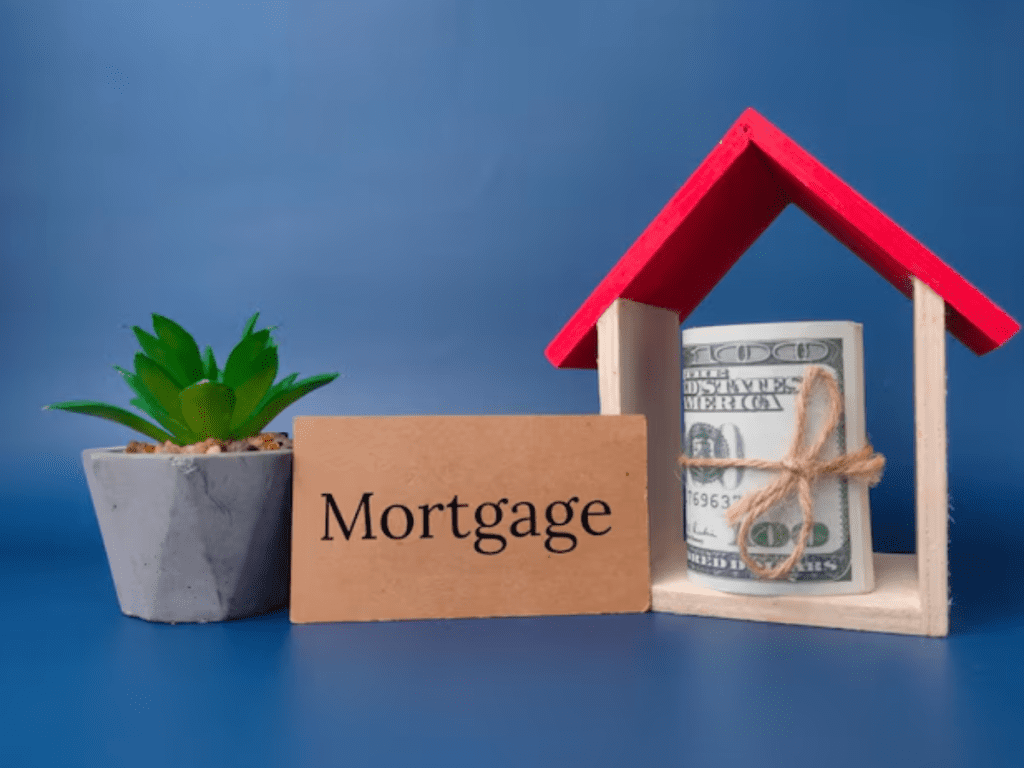Introduction
Home loan refinancing is a money move where homeowners switch their current mortgage for a new loan, typically with improved terms. Refinancing aims to obtain a lower interest rate, lower monthly installments, alter the loan term, or tap home equity for other purposes. But refinancing is not always advisable. While it can be a source of relief from financial burdens in certain situations, it can also bring additional expenses if tactically maneuvered. Before refinancing, homeowners need to know how it is done, when it is a good idea, and when it is not a good financial decision. This guide will cover the most important details of home loan refinancing to enable borrowers to make the right choices.
What Is Home Loan Refinancing
Home loan refinancing entails swapping an old mortgage with a new one, which usually has varying terms and conditions. When a property owner refinances, they basically settle the old mortgage through a new loan, either from the same or a different lender. The new loan can have a lower rate of interest, varying repayment period, or even an adjusted amount of the loan, depending on the needs and financial situation of the borrower.
There are a number of reasons why homeowners refinance, such as lowering interest rates, decreasing monthly payments, converting from a floating-rate to a fixed-rate loan or vice versa, and taking out additional funds based on the equity accumulated in the house. Refinancing is not free, though. It comes with fees like processing fees, legal fees, and possible penalties for closing the old loan prematurely.
When It Makes Sense to Refinance a Home Loan
When Interest Rates Have Dropped
Refinancing. a. home. loan. due. to. falling. market. interest. rates. is. probably. the. most. frequent. ground. for. a. refinance. If interest rates have fallen since a. borrower. took. lower. out. a. mortgage. loan,. they. should. consider. refinancing. to. enjoy. lower. monthly. payments. and. a. lower. total. interest. cost.
If the new rate is one to two percentage points lower than the existing rate, refinancing can lead to huge savings during the loan period. But borrowers must also look at the refinancing charges so that the savings are more than the charges.
When You Want to Reduce Monthly Installments
In the event that a homeowner is having trouble making mortgage payments due to high monthly amounts, refinancing can assist. Refinancing can reduce the monthly payment by either increasing the loan term or obtaining a reduced interest rate.
Reducing monthly installments can be a relief during periods of economic downturn. Borrowers should note that this will come at the expense of extending the loan period, which means potentially ending up with a higher total interest paid over the period.
When You Want to Shorten the Loan Tenure
Homeowners who are financially better off than when they first borrowed their mortgage can consider refinancing to reduce the loan term. The loan term is shorter, which implies higher monthly installments, but it also translates into considerable interest savings and quicker loan repayment.
For instance, changing from a twenty-year loan to a fifteen-year loan will raise the monthly payment marginally, but it will make homeowners debt-free earlier and lower the total interest paid on the loan.
When You Want to Switch Between Fixed and Floating Interest Rates
Refinancing can be beneficial for borrowers who wish to switch between fixed and floating interest rate loans.
If the borrower originally elected a fixed-rate loan and interest rates in the market have fallen, converting to a floating-rate loan will enable taking advantage of reduced payments. On the other hand, when market rates are increasing and one would want stability, a conversion from a floating-rate loan to a fixed-rate loan can ensure financial security.
When You Want to Access Home Equity
Homeowners who have established a lot of equity in their home can opt to refinance to obtain more funds. This is referred to as a cash-out refinance. The lender advances a bigger loan than what the borrower already owes, with the excess given in cash.
This method can prove useful to finance significant costs like home remodelling, educational expenses, or investment in business. Nevertheless, one should make efficient use of the borrowed amount to avoid boosting the loan as it raises the repayment burden.
When You Want to Consolidate Debt
For multiple high-interest loans by homeowners, refinancing offers the opportunity to consolidate all of them into a single loan at a lower interest rate. This simplifies payments and saves interest in the long run.
For instance, an individual with high credit card debt and an in-person loan can refinance their house loan to settle those debts, earning a reduced interest rate as well as one monthly payment as opposed to several payments.
When Refinancing Does Not Make Sense
When Refinancing Costs Are High
Refinancing is not costless and involves various expenses, such as loan processing fees, attorney fees, prepayment penalties on the current loan, and valuation fees. If the expenses exceed the possible savings, refinancing might not be a good choice.
Borrowers need to calculate the break-even point, the amount of time needed to recover the cost of refinancing by saving on payments every month. If the break-even is very long or the borrower is unlikely to remain in the house that long, then refinancing would not be advantageous.
When Your Credit Score Has Declined
A borrower’s credit score is key to deciding eligibility for a loan and the rate of interest. If the credit score of a homeowner has lowered since the loan was originally obtained, he may not be able to get beneficial refinancing rates.
In that situation, rather than refinancing right away, borrowers must increase their credit score by paying timely installments and lowering outstanding obligations before they try to obtain another loan.
When You Are Near Repaying Your Current Loan
If the homeowner has very few years of repayment remaining on the mortgage, it may not be worth refinancing. The majority of home loans are designed in such a manner that the interest portion is more in the initial years and the principal repayment is more in the subsequent years.
Refinancing at the last stage of a loan can be of little use, since the interest cost is already lesser at this time.
When You Plan to Sell Your Home Soon
If the homeowner intends to sell his house in the near future, then refinancing would not be a very feasible option. Refinancing fees take time to be recovered, and if the house is sold before the recovery of those costs, it may result in financial loss.
Borrowers must consider their long-term strategy prior to refinance decision making. If house sale is going to happen within the next years, it can be more wise to stick to the current loan instead of refinancing and then paying the corresponding costs.
Key Points to Keep in Mind Prior to Refinancing
Prior to home loan refinancing, there are certain things that borrowers ought to keep in mind:
Overall Financial Situation – Evaluate personal financial stability prior to signing a refinanced loan.
Interest Rate Difference – Make sure the new interest rate is considerably lower than the current rate to make refinancing worthwhile.
Loan Tenure – Determine whether to lengthen or shorten the loan term depending on monetary objectives.
Break-Even Period – Determine how long it will take to break even on refinancing expenses and whether it will be possible to remain in the house for so long.
Credit Score – A good credit score enhances the likelihood of getting more favorable refinancing terms.
Lender Comparison – Shop around for offers from several lenders to get the best refinancing offer.
The article has discussed all the necessary points of home loan refinancing, such as when it is prudent, when not, and what to keep in mind. But to give even more value, let’s discuss extra refinancing techniques, possible risks, other options, and expert advice to get the most out of a refinancing move.
Refinancing Strategies to Get the Most Out of It
Although refinancing is mostly used to cut down interest rates and monthly payments, there are a few sophisticated tactics that borrowers can implement to optimize their financial advantage.
1. Refinancing to Eliminate a Co-Borrower
Most homeowners joint-lend with a spouse, parent, or business partner. While joint-lending is a good idea in most cases, there may be instances where a party wishes to remove themselves from the loan for personal or financial reasons.
Example: A couple who had a joint home loan decides to get divorced. One of the partners wishes to retain the house and assume full responsibility for the mortgage. Refinancing in their sole name eliminates the other partner from the loan.
Key Considerations:
Make sure the remaining borrower has a good credit score and financial ability.
The lender might demand a new property valuation prior to approving the refinance.
2. Refinancing to Escape Balloon Payments
Certain home loans have balloon payments, in which borrowers pay little each month for the majority of the loan duration and then must pay a huge lump sum at the end. If a borrower cannot pay this huge amount, refinancing can turn the loan into a regular mortgage with equal monthly payments.
Key Considerations:
Refinancing should be done well before the balloon payment is due to avoid financial stress.
Compare long-term costs between refinancing and making the balloon payment.
3. Refinancing to Consolidate Multiple Loans
Homeowners with multiple outstanding loans—such as a home loan, personal loan, or car loan—can refinance their home loan to consolidate all debts into a single, lower-interest mortgage.
Illustration: A home owner having a ₹40 lakh home loan at 7.5% interest and ₹10 lakh personal loan at 14% interest can consolidate them into a lower-interest home loan, saving total interest paid.
Essential Points:
Avoid any prepayment charges on old loans before the refinancing process.
Don’t stretch the loan period too far, as this can boost the overall interest paid.

